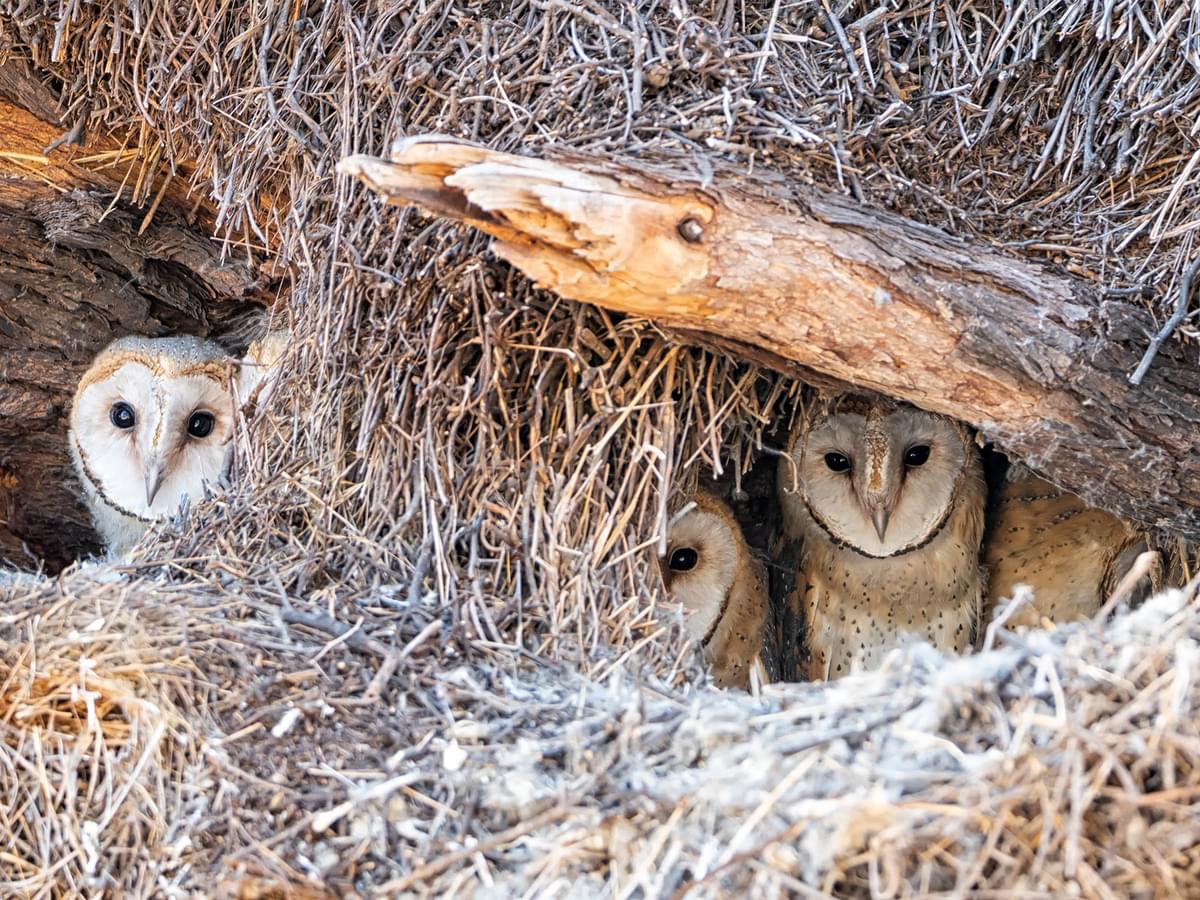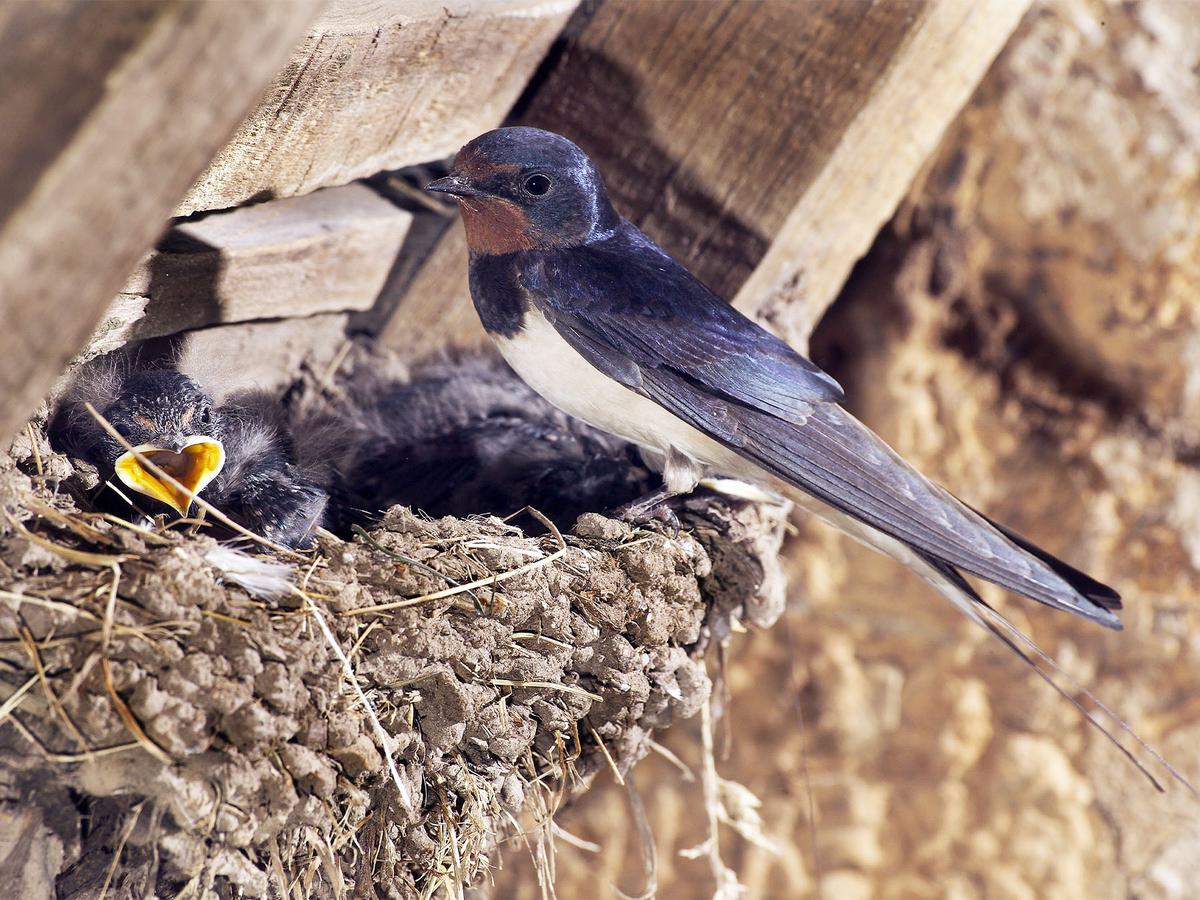Nesting Habits

Have you ever pondered on whether the egg or the chicken came first? Well, perhaps it was the nest.
A bird’s egg is a fragile life form. If incubated correctly, it takes anything from a few days to a few months to hatch. After hatching, some baby birds leave the nest on their first day, while others may spend many weeks before taking their first tentative flights. For most species, this process requires the shelter and protection of the nest.
While they may all have the same basic function, not all nests are created equally. Some are little more than a few scratches in the dirt, while others are highly complex and masterfully built structures. This guide uncovers the fascinating world of bird nests. Read along to learn more about their purpose, construction, and why it’s so important to protect nesting birds.
The Purpose Behind Nesting
Nesting: Beyond a Shelter
A bird’s nest provides a few essential functions. Firstly, the nest provides a safe surface where the eggs can remain together without rolling away, falling and breaking, or being covered in water. Nests may also provide an insulating effect to keep the eggs’ temperature stable during incubation.
Nests help to camouflage eggs, and chicks, and incubate adults to keep them safe from predators. They are often carefully built from soft materials to provide a nurturing environment for the growing chicks and a comfortable and sheltered space for the adult.
Influence on Offspring Survival
These crucial first weeks and months determine the survival of a young bird, and using a nest dramatically increases their chance of success. While some birds raise their young without a nest, and some simply steal or reuse the old nests of other species, most birds rely on nests for successful incubation and the survival of their offspring.

A Chinese Penduline Tit at the nest feeding its young
Diversity in Nesting Habits
Varying Architectures
The classic bird’s nest is somewhat cup or bowl-shaped, with a rounded profile when viewed from above or below. This shape prevents the eggs and young chicks from falling from the nest while providing a platform where the adult birds can incubate in safety.
However, nests come in a surprising array of shapes and sizes. Many ground-nesting birds scrape away at the soil or sand to create a slight depression, which they may or may not line with other materials.
While most nests are somewhat 2-dimensional, many birds build ball-shaped nests, complete with walls and a roof. These nests may be positioned on a surface or hang suspended below some kind of anchor point. The entrance to these nests may be from below or the side and some even have false openings to fool predators.

An African Southern Masked Weaver constructing its nest
Nesting Material Choices
Birds use various natural and man-made materials to build their nests. Some species will use just about anything they can find, while others source specific materials and use them during particular phases of construction.
Plant matter, like twigs, forms the basis of most birds’ nests, but you might spot any of the following materials in a nest, depending on the species that built it.
Plant materials
- Grass
- Sticks
- Leaves
- Moss
- Lichen
Animal materials
- Animal hair
- Feathers
- Spider webs
- Sea shells
- Bird saliva
Inorganic and artificial materials
- Mud/clay
- Plastic
- Thread
- Paper
Sourcing materials for the nest can take a lot of effort. Swallows, for example, build the major structure of their nests from mud. This must be collected from a puddle or river/lake bank one beak-full at a time, sometimes at a considerable distance from the nest site.
Meanwhile, ground-nesting ducks may simply use whatever plant material is within a body’s length of their chosen site and then line the nest with feathers from their own breast. At the far extreme, some birds, like falcons and owls, make no nests at all, and some simply lay their eggs on the bare ground.

A Barn Swallow builds the major structure of its nest from mud
Locations and Environments
Site Selection
Nest site selection is a crucial step in the reproductive process, and a poor choice often ends in nest failure. The male, female, or both parents may be responsible for selecting the site. In some cases, the same nest or nest site may be used year after year. Some species look for highly specific microenvironments, while others are content to nest in pretty unexpected places.
Shelter from the wind, rain, and sun and safety from predators are the major priorities for nesting birds, so nests tend to be well-hidden or built in inaccessible places. Distance from food sources is also an important consideration, particularly for birds with specialized diets.
Many birds nest colonially, sometimes in colonies numbering in the thousands. Where suitable nest sites are limited, such as on sea cliffs and small islands, some birds will nest in mixed colonies with several different species.
Human-made Structures as Nests
Human development has a negative impact on most bird species, but some find great nesting opportunities in our buildings and structures. These sites are often well-hidden, sheltered, and safe from roaming ground predators.
Common artificial nest sites
- Under eaves
- Telephone and powerlines
- Among rafters
- On rooftops and windowsills
- On billboards
- Under bridges
- In birdhouses and nest boxes
- In sheds
Odd places like shoe boxes, watering cans, plant pots, etc.
Some species, like the Barn Owl and Barn Swallow, rely on human structures for nest sites across much of their range. Others, like the Rock Dove and House Sparrow, have benefited greatly from the expansion of agriculture and urbanization, becoming extremely widespread and common across the world.

Carmine Bee-eaters. Many birds nest colonially, sometimes in colonies numbering in the thousands
Challenges and Threats to Nesting
Natural Predators and Threats
Nesting is a risky time for birds, especially because they cannot simply move their nest or eggs when danger strikes. The following threats are common causes of nest failures in both wild and developed environments:
- Predation by other birds, mammals, reptiles, and humans
- Extreme weather events like strong winds and hail
- Wildfires
- Trampling by livestock and other large animals
- Flooding
- Removal and destruction by humans during tree felling, etc.
Human Intervention
Unfortunately, human activities often harm nesting birds. Habitat destruction and alteration are major causes of bird population crashes, but even seemingly pristine environments can be heavily affected by pollution.
The use of pesticides like DDT had devastating impacts on nesting birds in the mid-1900s, and its use is still permitted in parts of the world affected by malaria.
Disturbance caused by recreational activities like motorsports and even hiking can also deter nesting birds, so it's important to remain sensitive to nesting birds and limit our disturbance in their natural environments.

Female Canada Goose. Nesting is a risky time for birds, especially because they cannot simply move their nest or eggs when danger strikes
Conservation and Protection
Ensuring Safe Nesting Grounds
Many of the world’s birds are threatened by the destruction of their natural environment, although species with restricted breeding ranges and specific nesting requirements are often the worst affected.
Colony nesting species like seabirds are particularly vulnerable to habitat destruction and disturbance by human development and introduced predatory species like cats and rats.
Protecting the breeding habitats and nesting grounds of these and other birds is vital for their ongoing survival and conservation.
Legal and Ethical Protocols
Most bird species are protected, at least in developed parts of the world, and this protection typically extends to their nests, eggs, and young. There are some exceptions in the case of invasive species, but it is generally an offense to interfere with an active bird’s nest, even if it’s on your property or your home.
Observing nesting birds can be fascinating and exciting, but it’s best to keep our feathered friends’ interests at heart. Approaching nesting birds causes them great anxiety and even causes nest failure in some cases, so stay back and reach for your binoculars instead of reaching for a bird’s nest.

Observing nesting birds can be fascinating and exciting, but it’s best to keep our feathered friends’ interests at heart
Summary
Have you seen or heard any birds today? You can bet that most or even all of them started their life in a nest, which really highlights the importance of these typical avian structures.
From tiny, neatly built cups lined with luxurious silk and hidden within the foliage to massive, untidy platforms of rough sticks built on tree tops, bird’s nests are all around us.
Keep a look out for nesting birds this spring and summer, but please give our feathered friends the space and respect they need during this crucial phase of their lives.